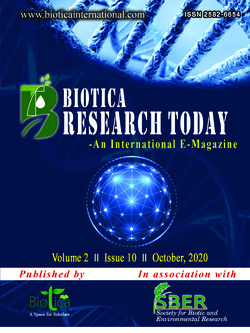
Modulation of Plant Immunity by Circadian Rhythm
Sneha R. Patil*
Dept. of Plant Pathology, College of Agricultural Technology, Theni, Tamil Nadu (625 562), India
C. Senthilraja
Dept. of Plant Protection, Horticulture College and Research Institute, TNAU, Periyakulam, Tamil Nadu (625 604), India
DOI: NIL
Keywords: logical clock, Circadian rhythm, Defence, Plants
Abstract
Almost all living organism on Earth have evolved the ability to assimilate environmental and internal signals to determine time and accordingly adjust their behaviour, metabolism and physiology. This evolved ability of the organisms to judge time is based on the concept of biological rhythm or circadian rhythm or circadian clock which is an endogenous time keeper and plays crucial role for multiple biological processes in many organisms. Plants also activate time dependent defence with various strategies to forestall daily attacks of pathogens and pests and to modulate responses to specific invaders in a time of day dependent manner. Likewise, pathogen also functions in a clock dependent manner to create infection and suppress the host defence. A better understanding of the role of circadian clock in plants immunity will help in regulating the management strategies.
Downloads
not found
Reference
Bendix. C., Marshall. M. C. and Harmon. G. F., 2015. Circadian clock genes universally control key agricultural traits. Molecular Plant; 1-18.
Lu. H., McClung. R. C. and Zhang. C., 2017. Tick Tock: circadian regulation of Plant Innate Immunity. Annual Review of Phytopathology; 55: 12.1-12.25.
